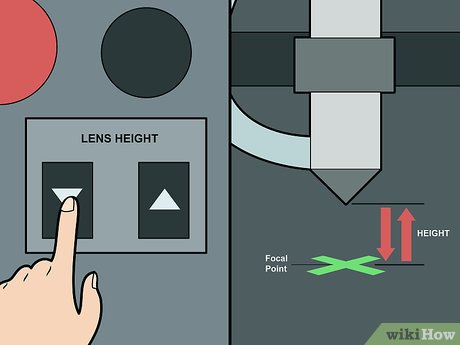
I. Introduction to Laser Cutting for Vintage Repairs
II. Preparing the Vintage Item for Laser Cutting
III. Using the Laser Cutting Machine for Precision Repairs
IV. Finishing Touches and Final Inspections
Have you ever wondered how vintage items can be repaired with such precision and accuracy? Well, one of the key techniques used in restoring these beloved treasures is laser cutting. In this guide, we will explore the fascinating world of laser cutting for vintage repairs.
Imagine you have a cherished vintage item, perhaps a delicate piece of jewelry or a worn-out leather accessory, that is in need of some tender loving care. Instead of traditional repair methods that can be time-consuming and sometimes even damaging, laser cutting offers a modern and efficient solution.
So, what exactly is laser cutting? Simply put, it is a process that uses a high-powered laser beam to cut through materials with extreme precision. This technology allows for intricate designs and delicate repairs that would be nearly impossible to achieve by hand.
Now, you might be wondering how laser cutting can be used specifically for vintage repairs. Well, the beauty of laser cutting lies in its versatility. Whether you need to replace a missing piece, mend a broken component, or even enhance the overall aesthetic of a vintage item, laser cutting can do it all.
One of the key benefits of laser cutting for vintage repairs is its ability to work with a wide range of materials. From metal and plastic to wood and fabric, a laser cutting machine can handle almost any material with ease. This means that whether your vintage item is made of precious metals or exotic woods, laser cutting can help bring it back to its former glory.
Furthermore, laser cutting offers unparalleled precision and accuracy. With a laser cutter, you can achieve cuts as fine as a hair strand, ensuring that your vintage item is repaired with the utmost care and attention to detail. This precision is essential when working on delicate and intricate vintage pieces that require a steady hand and a keen eye.
But before we dive into the nitty-gritty of laser cutting for vintage repairs, it’s important to note that this technology should be handled with caution and expertise. If you are not familiar with how laser cutting works or how to operate a laser cutting machine, it’s best to seek professional help from experienced technicians who specialize in vintage repairs.
Now that you have a basic understanding of laser cutting for vintage repairs, get ready to embark on an exciting journey into the world of precision restoration. Stay tuned for the next steps in our guide, where we will delve into how to prepare your vintage item for laser cutting.
Preparing the Vintage Item for Laser Cutting
So, you’ve got your hands on a beautiful vintage item that needs a little bit of love and restoration. Whether it’s a delicate piece of jewelry, a unique figurine, or a classic watch, laser cutting can be a game-changer when it comes to precision repairs. But before you dive into the world of laser cutting, there are a few key steps you need to take to prepare your vintage item.
1. Clean and Inspect the Item
Before you even think about firing up the laser cutting machine, take the time to thoroughly clean and inspect the vintage item. Dust, dirt, and grime can interfere with the laser cutting process, so make sure to give the item a gentle wipe down with a soft cloth. Inspect the item for any cracks, chips, or other damage that may need to be addressed before moving forward with laser cutting.
2. Take Measurements and Create a Digital Model
Next, it’s time to take precise measurements of the vintage item. This will ensure that the laser cutting process is accurate and that any repairs fit seamlessly into place. Once you have your measurements, consider creating a digital model of the item using CAD software. This will allow you to visualize the repairs and make any necessary adjustments before cutting into the actual item.
3. Choose the Right Material
When it comes to laser cutting, the type of material you choose can make all the difference. Consider the vintage item you are working with and choose a material that is compatible with both the laser cutting machine and the item itself. Whether it’s metal, wood, plastic, or another material, make sure to select one that will result in precise and clean cuts.
4. Protect Delicate Areas
If your vintage item has delicate or intricate areas that you want to preserve during the laser cutting process, consider using masking tape or another protective material to cover these areas. This will help prevent any accidental damage and ensure that the repairs are focused where they are needed most.
5. Consult with a Professional
If you’re new to the world of laser cutting or unsure about the best approach for repairing your vintage item, don’t hesitate to consult with a professional. They can offer valuable advice, guidance, and expertise to help you navigate the laser cutting process and achieve the best results possible.
Conclusion
By taking the time to properly prepare your vintage item for laser cutting, you can ensure that the repairs are precise, seamless, and perfectly tailored to your needs. So, roll up your sleeves, gather your materials, and get ready to breathe new life into your cherished vintage items with the power of laser cutting.
Using the Laser Cutting Machine for Precision Repairs
Now that you’ve prepared your vintage item for laser cutting, it’s time to delve into the fascinating world of precision repairs using this advanced technology. Laser cutting offers unparalleled accuracy and control, making it an ideal tool for delicate restoration work on your cherished vintage pieces.
1. Setting Up the Laser Cutting Machine
Before you begin, make sure to properly set up the laser cutting machine according to the specifications of your vintage item. Adjust the power, speed, and focus of the laser beam to ensure precise cuts without damaging the material. It’s crucial to take your time with this step to avoid any mistakes that could compromise the integrity of your repair.
2. Executing the Repair
With the laser cutting machine properly set up, carefully guide the laser beam along the designated path for the repair. Keep a steady hand and maintain a consistent speed to achieve clean, accurate cuts. Remember, precision is key when working on vintage items, so take your time and focus on each cut to ensure a seamless repair.
3. Fine-Tuning the Details
Once the initial cuts have been made, it’s time to fine-tune the details of your repair. Use the laser cutting machine to create intricate patterns, engrave designs, or make precise adjustments to the vintage item. Pay close attention to the smallest details to ensure a flawless finish that seamlessly blends with the original craftsmanship.
4. Test and Refine
After completing the repair, it’s important to test the vintage item to ensure that the functionality and aesthetic appeal have been restored. Check for any rough edges, misalignments, or imperfections that may need further refinement. Use the laser cutting machine to make any necessary adjustments until you are satisfied with the final result.
5. Final Inspection
Once you are confident that the repair is complete, perform a final inspection to assess the quality of your work. Examine the vintage item under different lighting conditions, touch up any remaining flaws, and ensure that the repair seamlessly integrates with the original design. Take pride in your craftsmanship and enjoy the satisfaction of restoring a piece of history with precision and care.
By following these steps and utilizing the precision and control offered by laser cutting technology, you can achieve stunning results in your vintage repairs. Remember to approach each repair with patience, attention to detail, and a commitment to preserving the beauty and authenticity of your cherished items. With the right tools and techniques, you can breathe new life into your vintage pieces and enjoy them for years to come.
Alright, so you’ve prepped your vintage item, used the laser cutting machine for precision repairs, and now it’s time for the finishing touches and final inspections. This is the part where your hard work truly pays off, so let’s dive in!
1. Finishing Touches:
- Once the laser cutting process is complete, take a close look at the repaired area to ensure that all parts are securely in place.
- If there are any rough edges or excess material left behind, use sandpaper or a file to smooth them out. This step is crucial for achieving a professional-looking finish.
- Consider applying a coat of paint or polish to the repaired area to blend it in with the rest of the vintage item. Make sure to choose a color that closely matches the original finish for a seamless repair.
2. Final Inspections:
- Before declaring your repair job complete, conduct a thorough inspection of the entire vintage item. Check for any other areas that may need attention, such as loose screws or damaged components.
- Test the functionality of the item to ensure that it operates as intended. For example, if you repaired a vintage clock, make sure that it keeps accurate time and chimes correctly.
- If you are satisfied with the repair work, give the item a final once-over to make sure everything looks polished and professional. Take pride in your craftsmanship!
Remember, attention to detail is key when it comes to vintage repairs. By taking the time to properly finish and inspect your work, you can ensure that your repair job stands the test of time. Don’t rush through this final step – your efforts will be well worth it in the end.
Now that you’ve completed the finishing touches and final inspections, your vintage item is ready to shine once again. Whether it’s a beloved family heirloom or a unique find, your repair work has given it a new lease on life. So sit back, admire your handiwork, and revel in the satisfaction of a job well done. Happy repairing!








Comments